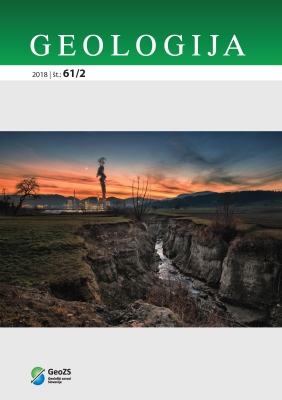Nahajališča zemeljskega plina na naftno-plinskem polju Petišovci
DOI:
https://doi.org/10.5474/geologija.2018.011Povzetek
Za nastanek nahajališč z ogljikovodiki so potrebni trije pogoji in sicer; matična kamnina, v kateri ogljikovodiki nastanejo (podlaga ali talnina), kolektorska porozna kamnina, v katero se ogljikovodiki ujamejo in zgornja neprepustna kamnina (krovnina). Poleg geološke strukture so potrebni še primerna temperatura, tlak in čas, da organska snov pri redukcijskih pogojih preide faze diageneze in generira ogljikovodike, kot jih poznamo danes. Vsako nahajališče ogljikovodikov, ki se odkrije in ima ekonomsko pomembne zaloge za proizvodnjo, gre skozi pet stopenj razvoja polja. Najprej se izvedejo geološke, geofizikalne, petrofizikalne, rezervoarske raziskave, katerih rezultati se nato razložijo in ovrednotijo z 2-D in predvsem s sodobnimi 3-D geološkimi modeli. Sledi razvoj celotnega polja, v okviru katerega se ovrednotijo geološke in bilančne zaloge vseh nahajališč. Sledi faza proizvodnje in na koncu faza sanacije polja. V Sloveniji smo največ zemeljskega plina proizvedli iz nahajališč »Petišovci globoko« in sicer od leta 1963 do leta 2017 skupaj več kot 341 milijonov Sm3. V zadnjih letih se polje dodatno razvija z obdelavo perspektivnih nahajališč zemeljskega plina v tako imenovani seriji 'K' (»Petišovci globoko«). Od leta 2017 poteka proizvodnja plina iz vrtin Pg-10 in Pg-11A.Prenosi
Kako citirati
Kerčmar, J. (2018). Nahajališča zemeljskega plina na naftno-plinskem polju Petišovci. Geologija, 61(2), 163–176. https://doi.org/10.5474/geologija.2018.011
Številka
Rubrika
Članki

